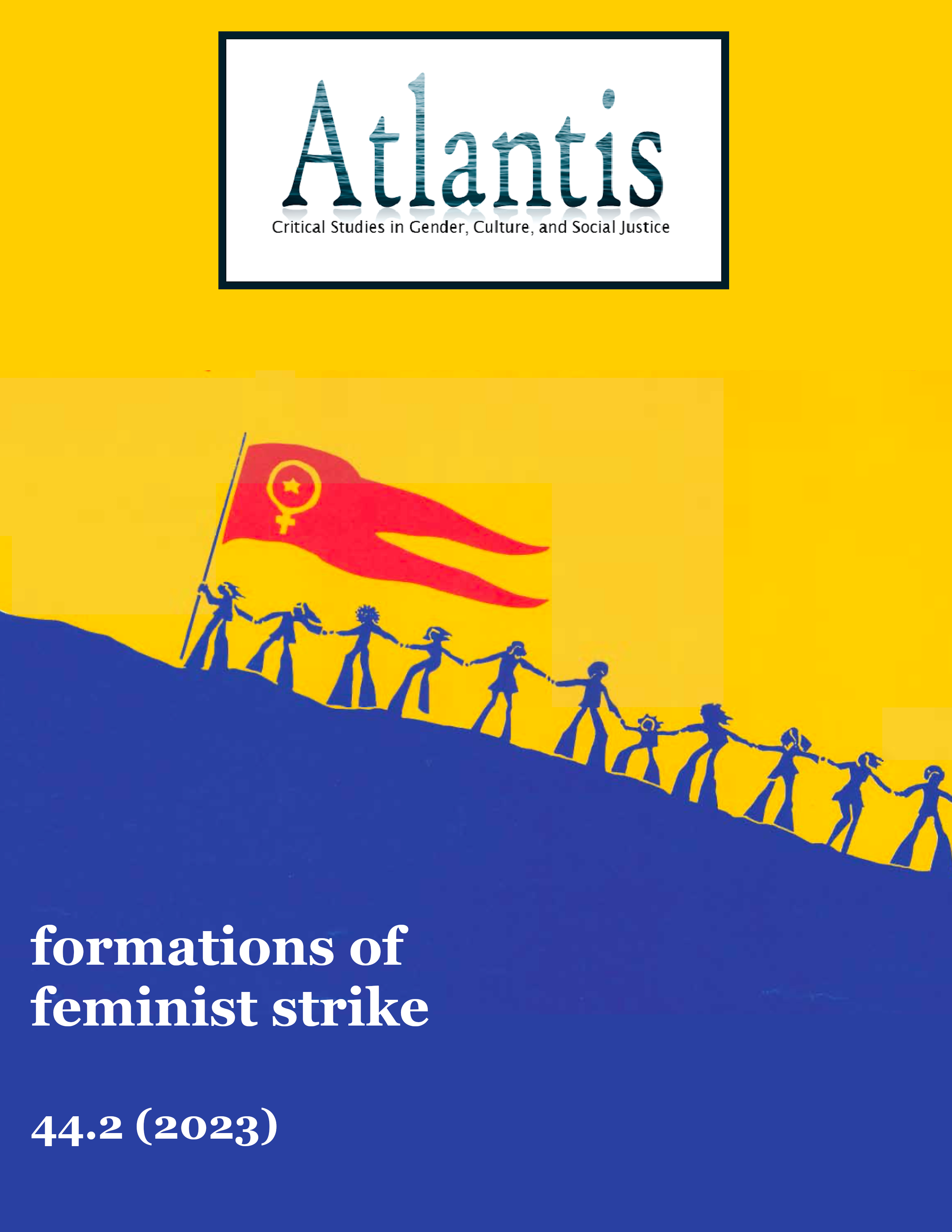From Italy with Rage: Feminists Striking in Uncertain Times
Keywords:
economic violence, feminism, social movements, strike, transnationalismAbstract
In this contribution, I reflect on the significance of the Paro Internacional de Mujeres (International Women’s Strike) for contemporary Italian feminism. I draw from autoethnographic research within the feminist movement Non Una di Meno (Not One Less) to explore how the organization of the strike on March 8, 2017, contributed to the development of the movement's theorization and mobilization strategies. In this piece, I illustrate how digital connectivity had a central role in facilitating the expression of solidarity and processes of exchange and ‘contamination’ (Salvatori 2021) between movements across borders. I describe how the sharing of materials, slogans, hashtags, and songs centred on similar claims contributed to the construction of a transnational political subject. Through the strike, feminists analyzed and denounced how economic and patriarchal violence play out in the context of Italy, while highlighting the systemic and non-exceptional character of these forces within neoliberal societies more broadly.
References
Arruzza, C., T. Bhattacharya and N. Fraser. 2019. Feminism for the 99%. London: Verso.
Cavallero, L., and V. Gago. 2020. “10 theses on feminist economics (or the antagonism between the strike and finance.” CLCWeb—Comparative Literature and Culture, 22(2): 1–9.
Della Porta, D. and M. Caiani. 2011. Social Movements and Europeanization. United Kingdom: OUP Oxford
Della Porta, D. (ed.) 2017. Global Diffusion of Protest: Riding the Protest Wave in the Neoliberal Crisis. Amsterdam: Amsterdam University Press.
Doerr, N. 2018. Political Translation: How Social Movement Democracies Survive. Cambridge, UK: Cambridge University Press.
Emejulu, A. 2018. “On the problems and possibilities of feminist solidarity: The women’s march one year on.” IPPR Progressive Review 24(4): 267–73.
Federici, S. 2018. Re-Enchanting the World: Feminism and the Politics of the Commons. Binghamton NY: PM Press.
Furtado, V., M. Menéndez, and S. Federici. 2020. “El feminismo es la punta de diamante de una insurgencia internacional.” Desinformemonos, 27 February 2020 [online].
Mason-Deese, L. 2020. Not One Woman Less—From hashtag to strike. Politics of Reproduction. Spheres #6 Available at: https://spheres-journal.org/wp-content/uploads/spheres-6_Mason-Deese.pdf
Monforte, P. 2014. Europeanizing Contention: The Protest Against ‘Fortress Europe’ in France and Germany. New York City, NY: Berghahn Books.
NUDM (Non Una Di Meno). 2017. Abbiamo un Piano: Piano femminista contro la violenza maschile sulle donne e la violenza di genere. Nonunadimeno [online]. Available https://nonunadimeno.files.wordpress.com/2019/09/piano-femminista-eng.pdf
Palmeiro, C. 2018. “The Latin American green tide: Desire and feminist transversality.” Journal of Latin American Cultural Studies 27(4): 561–64.
Palmeiro, C. 2020. “Ni Una Menos and the Politics of Translation.” Spheres, March 12, 2020.
Prandi, S. 2018. Oro Rosso. Fragole, pomodori, molestie e sfruttamento nel Mediterraneo. Settenove Edizioni.
Rudan, P. 2018. “The strike that made a difference.” Critical Times 1(1): 241–262.
Sabbadini, L. L. 2015. L’uso di internet da parte dei cittadini. Istituto Nazionale di Statistica, Dec 22, 2015
Salvatori, L. 2021. Feminism in transit: A study of the transnational feminist movement Non Una Di Meno. University of Leicester, Thesis.
Downloads
Published
Issue
Section
License
Copyright (c) 2023 Lidia Salvatori

This work is licensed under a Creative Commons Attribution 4.0 International License.
Authors who publish with this journal agree to the following terms:
1. Authors retain copyright and grant the journal right of first publication, with the work simultaneously licensed under a Creative Commons Attribution 4.0 International License that allows others to share the work with an acknowledgement of the work's authorship and initial publication in this journal.
2. Authors are aware that articles published in Atlantis are indexed and made available through various scholarly and professional search tools, including but not limited to Erudit.
3. Authors are able to enter into separate, additional contractual arrangements for the non-exclusive distribution of the journal's published version of the work (e.g., post it to an institutional repository or publish it in a book), with an acknowledgement of its initial publication in this journal.
4. Authors are permitted and encouraged to preprint their work, that is, post their work online (e.g., in institutional repositories or on their website) prior to and during the submission process. This can lead to productive exchanges, as well as earlier and greater citation of published work. Read more on preprints here.







